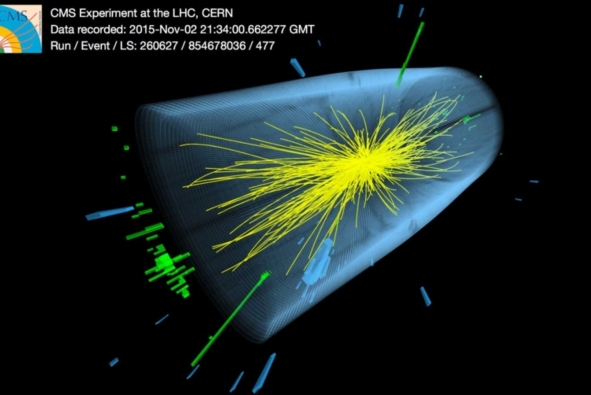Physicists from CERN may have stumbled upon an unknown elementary particle

Visualization of experimental data
Two independent teams of physicists from CERN, the European Organization for Nuclear Research, working at the Large Hadron Collider, reported the observation of traces of an unidentified particle that was not predicted by the Standard Model. In the case of confirmation of their findings, it may become the largest discovery in physics.
So far, scientists have two suggestions. A potential new particle may turn out to be a heavier version of the Higgs boson responsible for mass, or graviton - the carrier of gravity.
True, it is too early to open champagne: measurements are subject to statistical errors and various errors. In 2012, scientists were already faced with the fact that, according to the results of measurements of neutrinos, they moved faster than the speed of light - and then it turned out that the problem was in an insufficiently good optical cable.
Kyle Cranmer, a physicist at New York University, notes that now at CERN it is hardly possible to find a specialist who believes that the data obtained is sufficient to unambiguously state the discovery. On the other hand, confirmation of the data obtained can cause a revolution in science.
According to current estimates, the probability that this “discovery” is a simple deviation is 1 chance to 93. This is much more than 1 to 2 million - the standard ratio of “5 sigma” for physical experiments.
On the other hand, the same results were found by two competing teams. Moreover, it was precisely these two teams that received data four years ago in the same week, which led to the confirmation of the existence of the Higgs boson. Nima Arkani-Hamed, a theoretical physicist specializing in elementary particles, remarks that the received signals are not apparent deviations at first glance, and are received via a “fairly clean channel”.
Maria Spiropulu, a professor from Caltech and a member of one of the teams who discovered mysterious results, writes: “We, the experimenters, discovered how a beast with an energy of 750 billion eV decayed into two photons. Let theorists explain this process. ”
The LHC reopened in June, after a two-year equipment upgrade, and collides protons with an energy of 6.5 trillion eV. In this regard, Professor Spiropulu added that when the LHC gets the opportunity to work with beams with an energy of 13 trillion. eV, physicists will move into that field of experiments in which they will “move to the touch”.
Confirm or deny the existence of a new particle of physics will be able by the summer of 2016. By the opening of the international conference in Chicago, they will be able to collect 10 times more data and verify it.
